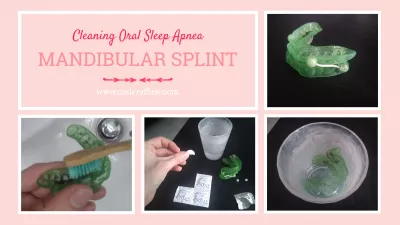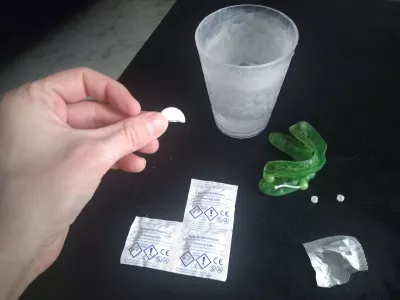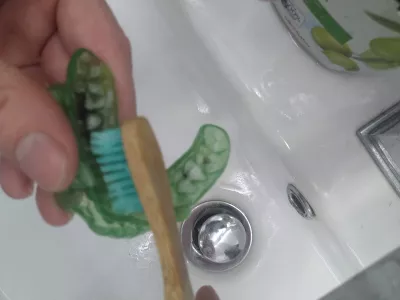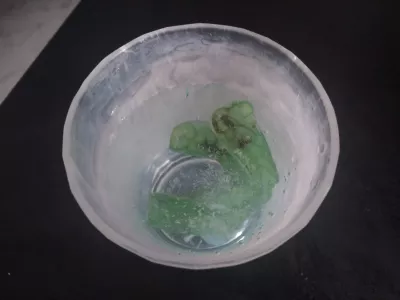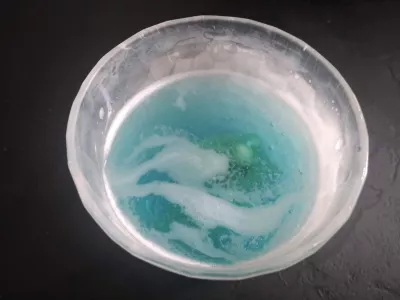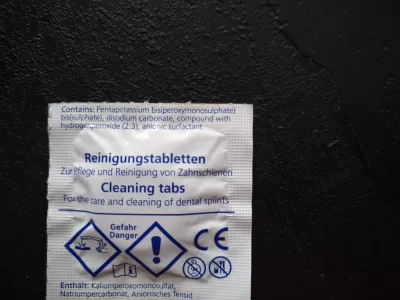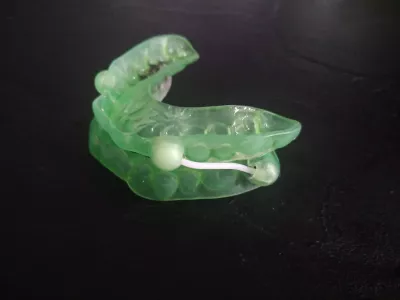Cleaning An Oral Sleep Apnea Apparatus: How-To?
- Sleep Apnea Machine Care
- Patients with CPAP intolerance
- What kind of patients is this therapy indicated for?
- Ready-made mandibular splint or custom-made?
- Mobility
- Possible side effects
- How to clean a mandibular advancement splint?
- Recommendations and guidelines for cleansing
- Cleaning warning
- Repair of damaged splints
Taking proper care of your sleep apnea machine will help increase its lifespan. Proper cleaning of the oral apparatus for sleep apnea (also called a mandibular advancement splint) will prolong its effectiveness.
With sleep apnea syndrome, it is very important to start treatment as soon as possible so as not to provoke other, much more serious problems. Protrusion splints are one of the effective methods.
Sleep Apnea Machine Care
Patients suffering from sleep apnea syndrome, the problem manifests itself in the form of fragmented sleep, due to constant micro-awakenings during hypoxia (lack of oxygen). This situation can develop myocardial infarction and blood pressure.
Sleep apnea is the suspension of breathing. These patients require effective treatment. Approximately one third of all patients cannot tolerate the classical CPAP therapy, therefore it is possible to use protrusion splints. But it is important not only to use it correctly, but also to clean the oral sleep apnea apparatus so that it remains in working and efficient condition.
The most common cause of sleep apnea is snoring. As a rule, a similar symptom occurs as a result of obesity and overweight. Among the causes of sleep apnea are alcohol abuse and smoking. With age, the likelihood of sleep apnea in adults increases significantly.
Patients with CPAP intolerance
If a patient who suffers from obstructive sleep apnea and has CPAP (Continuous positive airway pressure) intolerance, then the somnologist can refer him to the dentist for a Mandibular advancement splint, or a protrusion splint.
Among the possible causes of CPAP intolerance, the following problems can be noted:
- fear of confined space;
- mask offset;
- irritation of the skin in place with a mask;
- exacerbation of conjunctivitis;
- dryness of the mucous membrane;
- rhinitis.
Only a protrusion splint can help in such cases. The bottom line is that due to the special structure, the tongue and lower jaw are pushed forward, thereby opening the airways. This method was invented and actively used in the 19th century.
What kind of patients is this therapy indicated for?
At the moment, the diagnosis of obstructive sleep apnea is established not only against the background of obvious clinical signs, but also the apnea index (AHI). This index is measured over the course of the entire sleep. There are 3 levels of severity:
- Strong level (AHI≥30).
- Average level (from or equal to 15, to 30 AHI).
- Weak level (from or equal to 5 to 15 AHI).
Thanks to the studies conducted, 88% of all patients showed a decrease in the AHI level to 5 events per hour, which is considered therapeutically significant. The baseline AHI was up to 25 per hour, and the study involved patients who had at least 8-10 healthy teeth on the lower jaw, based on periodontal indications.
If the number of teeth is not enough, then implants can be placed on the lower jaw. Protruded splints are prescribed in the following cases:
- for patients with CPAP intolerance;
- in case of primary snoring;
- with an average and mild level of sleep breathing disorders;
- with the syndrome of resistance of the upper respiratory tract.
Be that as it may, even in the case of severe sleep breathing disorders, the protrusion splint will be able to reduce the apnea index, cardiovascular risks will decrease, and the patient's condition will become much better.
Ready-made mandibular splint or custom-made?
Clinical studies have shown that ready-made products are undesirable for the treatment of sleep-disordered breathing because they do not have the desired therapeutic effect. Individual products should fit as tightly as possible in order to stay on the dentition during sleep and to ensure the optimal position of the jaw, pushed forward. It is due to this that the opening of the upper respiratory tract is guaranteed.
Mobility
The main difference between CPAP therapy and a protrusion splint is the latter's mobility. The splint allows treatment anywhere and at any time, for example while traveling by rail.
The patient remains active, which is especially important for elderly people who want to lead an active lifestyle, not always near the outlet, which is a prerequisite for the CPAP device. The protruding splint does not need electricity and can fit in your pocket.
Possible side effects
During the initial use of the splint, salivation may be activated, but this is normal and will normalize over time. The second point is muscle tension. You will need to wait for the first 7-10 days until the muscles get used and the muscle pains disappear.
Muscle discomfort should go away in the first 2-3 hours after removing the plate, if they remain longer, you need to contact your dentist to restore the bite. Sometimes, due to the anatomical features of the structure of the jaw, the bite may change. To control this process, it is important to have regular check-ups with a dentist.
How to clean a mandibular advancement splint?
Proper cleaning of the oral sleep apnea apparatus is very important. There are several mandatory recommendations that will help keep the device intact, safe and extend the operational life:
- use exclusively specialized means for cleansing;
- every morning after waking up, thoroughly rinse the tire with ordinary running water and clean it using a toothbrush;
- the set includes a special cleaning brush, with which it is necessary to clean the titration screws on both sides;
- as soon as the morning cleaning is over, it is necessary to dry the tires and send them dry to a special storage box;
- the protective box and tires must be protected from UV rays.
Once or twice a week, let the mandibular splint rest in water with a specially designed cleaning tab, or some mouth wash if you lack it.
Even if you are letting your splint self-clean itself in water, do not forget to wash it under clear water, and to use a toothbrush with toothpaste for a first cleaning, before using the cleaning tab.
There are various brands of mandibular splint cleaning tabs, but the general ingredients should be the following, to validate with your exact splint model and composition before use:
- Pentapotassium bis (peroxymonosulphate) bis(sulphate),
- Disodium carbonate,
- Compound with hydrogenperoxide,
- Anionic sulfatant.
They are similar to mouth guard cleaners, but are different than standard dentures cleaners, as the splints are primarily composed of soft plastic.
Recommendations and guidelines for cleansing
Some materials used for the soft part of a splint can change color due to contact with various substances, including: nicotine, mouthwash solutions, colored sodas, red wine, some medicines, tea and coffee. Every time, at night, before installing the splint, you must thoroughly brush your teeth.
Cleaning warning
Some people use special cleaning tablets for dentures and if they contain active oxygen, then it is better to refuse to use them, as they can damage the plastic parts of the splint. Toothpaste can also negatively affect the service life and therapeutic properties of the splint.
Repair of damaged splints
Broken and damaged devices are strictly prohibited to use. It is also impossible to repair them on your own. You must immediately contact your dentist who can send the splint for repair. Sometimes they are covered by the warranty and repair or replacement will be done free of charge. The patient should constantly check the device for chips, cracks and other damage.
